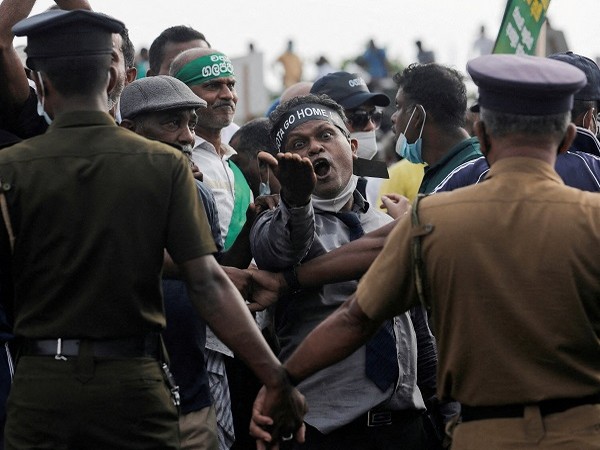

Sri Lankan protesters began to retreat from government buildings they seized and military troops reinforced security at the Parliament on Thursday, establishing a tenuous calm in a country in both economic meltdown and political limbo.
Embattled President Gotabaya Rajapaksa fled a day earlier under pressure from demonstrators furious over the island nation’s economic collapse. But he failed to resign as promised — and further angered the crowds by making his prime minister acting leader.
Protesters want both men out and a unity government in to address an economic calamity that has triggered widespread shortages of food, fuel and other necessities. But with a fractured opposition and confusion over who was in charge, a solution seemed no closer following Rajapaksa’s departure. Adding to the turmoil, the president left the Maldives for Singapore on Thursday, according to an official who spoke on condition of anonymity because of the sensitivity of the matter.
The protesters accuse Rajapaksa and his powerful political family of siphoning money from government coffers for years and his administration of hastening the country’s collapse by mismanaging the economy. The family has denied the corruption allegations, but Rajapaksa acknowledged some of his policies contributed to the meltdown.
Months of protests reached a frenzied peak over the weekend when demonstrators stormed the president’s home and office and the official residence of the prime minister. On Wednesday, they seized the office of Prime Minister Ranil Wickremesinghe.
They initially vowed to hold these places until a new government was in place, but the movement appeared to shift tactics Thursday.
Protest leader Devinda Kodagode told The Associated Press they planned to vacate official buildings after the Parliament speaker said he was exploring legal options for the country given that Rajapaksa left without submitting his resignation letter as promised.
Protesters withdrew from the presidential residence, with some moving a red carpet they had rolled up back into place as they left. Some still milled outside the president’s office.
“We are not willing to take power in the building,” said Sanka Jayasekar, a 20-year-old protester leaving the president’s residence. “We just want to kick out (the) Rajapaksa regime. Already Gota Rajapaksa (has) left the country, so he has no power in Sri Lanka so we have gained our power again so that is why we are leaving the building.”
Other protesters posted videos on social media pleading with their compatriots not to storm the Parliament, after clashes outside the building on Wednesday.
Troops in green military uniforms and camouflage vests arrived in armored personnel carriers Thursday to reinforce barricades around the Legislature.
The government, meanwhile, announced another curfew in the capital Colombo and its suburbs in the afternoon until 5 a.m. Friday. It’s unclear what effect a curfew would have: Some ignored a previous one, but many others rarely leave their homes anyway because of fuel shortages.
Rajapaksa and his wife fled Sri Lanka early Wednesday for the Maldives, slipping away in the night aboard an air force plane. On Thursday, he headed to Singapore, according to the Maldives official.
It was not immediately clear what Rajapaksa’s final destination would be. The official initially indicated he planned to travel onward to Saudi Arabia, but later could only confirm his first stop in Singapore, where the plane believed to be carrying him landed Thursday evening. Since Sri Lankan presidents are protected from arrest while in power it’s likely Rajapaksa wanted to plan his departure while he still had constitutional immunity and access to a military plane.
On Wednesday, protesters undeterred by multiple rounds of tear gas scaled the walls to enter the prime minister’s office as the crowd outside cheered in support and tossed water bottles to them. Protesters took turns posing at his desk or stood on a rooftop terrace waving the Sri Lankan flag.
Amid the mounting chaos, Wickremesinghe’s office imposed a state of emergency giving broader powers to the military and police. Defense leaders have called for calm and cooperation with security forces — comments that have rankled some lawmakers who insist civilian leaders would be the ones to find a solution.
Assuming that Rajapaksa resigns as promised, Sri Lankan lawmakers have agreed to elect a new president from their ranks on July 20 who will serve the remainder of Rajapaksa’s term, which ends in 2024. That person could potentially appoint a new prime minister, who would then have to be approved by Parliament.
The political impasse threatens to worsen the bankrupt nation’s economic collapse since the absence of an alternative government could delay a hoped-for bailout from the International Monetary Fund. In the meantime, the country is relying on aid from India and China.
The shortages of basic necessities have sown despair among Sri Lanka’s 22 million people. The country’s rapid decline was all the more shocking because, before the recent crisis, the economy had been expanding, with a growing, comfortable middle class.